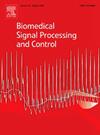Spatial-frequency fusion for retinal vessel segmentation
IF 4.9
2区 医学
Q1 ENGINEERING, BIOMEDICAL
引用次数: 0
Abstract
The segmentation of retinal blood vessels is clinically significant for diagnosing many ocular disorders and can assist in identifying multiple medical conditions, including diabetes, atherosclerosis, and cardiovascular disease. Therefore, accurate identification of the retinal blood vessels in the fundus can significantly aid physicians in diagnosing and treating their patients’ conditions. In this paper, we propose a retinal blood vessel segmentation method that combines the spatial and frequency domains. Existing CNN methods obtain local features by using convolutional operations in the spatial domain, and are not capable enough in obtaining global spatial feature information. Therefore, we introduce a Fourier transform to obtain global information and learn the long-distance distribution of blood vessels. In the frequency domain, we designed a multiscale Gaussian high-pass filter to adaptively enhance the edge features of blood vessels of different scales. Since frequency domain information is more concerned with global dependencies and spatial information is more capable of capturing local detailed features, the fusion of frequency and spatial domains can effectively capture the general trends and complex details within the hidden layer space. In order to assess the model’s efficacy, we conducted tests using the pre-existing DRIVE and CHASE_DB1 datasets. Our accuracy achieved 96.90 and 97.81 respectively, and a sensitivity of 83.80 was obtained for the DRIVE dataset. By observing the segmented image, our segmentation is more accurate, clearer, and noise-free than the results of other proposed methods.
空间-频率融合视网膜血管分割
视网膜血管的分割对许多眼部疾病的诊断具有重要的临床意义,可以帮助识别多种疾病,包括糖尿病、动脉粥样硬化和心血管疾病。因此,准确识别眼底视网膜血管对医生诊断和治疗患者的病情具有重要意义。本文提出了一种结合空间域和频率域的视网膜血管分割方法。现有的CNN方法通过在空间域中使用卷积运算来获取局部特征,对于获取全局空间特征信息的能力不足。因此,我们引入傅里叶变换来获取全局信息并了解血管的远距离分布。在频域,我们设计了一个多尺度高斯高通滤波器,自适应增强不同尺度血管的边缘特征。由于频域信息更关注全局依赖关系,而空间信息更能捕捉局部细节特征,因此频域和空间域的融合可以有效地捕捉隐藏层空间内的总体趋势和复杂细节。为了评估模型的有效性,我们使用预先存在的DRIVE和CHASE_DB1数据集进行了测试。我们的准确率分别达到96.90和97.81,对DRIVE数据集的灵敏度达到83.80。通过观察分割后的图像,我们的分割结果比其他提出的方法更准确、更清晰、无噪声。
本文章由计算机程序翻译,如有差异,请以英文原文为准。
求助全文
约1分钟内获得全文
求助全文
来源期刊

Biomedical Signal Processing and Control
工程技术-工程:生物医学
CiteScore
9.80
自引率
13.70%
发文量
822
审稿时长
4 months
期刊介绍:
Biomedical Signal Processing and Control aims to provide a cross-disciplinary international forum for the interchange of information on research in the measurement and analysis of signals and images in clinical medicine and the biological sciences. Emphasis is placed on contributions dealing with the practical, applications-led research on the use of methods and devices in clinical diagnosis, patient monitoring and management.
Biomedical Signal Processing and Control reflects the main areas in which these methods are being used and developed at the interface of both engineering and clinical science. The scope of the journal is defined to include relevant review papers, technical notes, short communications and letters. Tutorial papers and special issues will also be published.
 求助内容:
求助内容: 应助结果提醒方式:
应助结果提醒方式:


